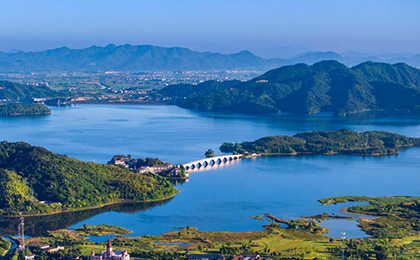


It is necessary to assess the quality of existing provision in the wider context (particularly for a large site or area), and use this as the basis for deciding on the elements of a proposed open space hierarchy. The table below provides a reference point for considering possible open space types classified according to location.
A typology of open spaces | |
Principle open space types | Character and function |
Greenway | A network of spaces encompassing cycle and footpath routes, but also acting as ‘wildlife corridors’ – enabling wildlife to travel through urban areas. Typically these follow streams or disused railways, for example, with green fingers penetrating from the countryside, through the town/city edge and into the urban core. |
Water way | Includes lakes, ponds, rivers, canals and streams, which provide rich wildlife habitats, offer recreational value and can be used as movement corridors. |
Meadow | A public space for informal recreation, located on the edge of a neighbourhood. Often part of a flood plain comprising natural grasses and wildflowers. |
Woodland / Nature Reserves | A wood or coppice of trees left in the natural state, interlaced with internal footpaths, sometimes designated as a nature reserve, with restricted access to areas rich in wildlife. |
Playing field | Open spaces formally laid out for active recreation, such as football or rugby- including golf courses. Management / ownership can be shared between schools, clubs and the wider community to ensure facilities are well used. |
Churchyard, cemetery | Located adjacent to a church and often providing a green oasis at the heart of a community. |
Allotments | A semi-public agglomeration of gardening plots rented to individuals by the local authority. |
Park | Regional parks, metropolitan parks, district parks, local parks, small local parks and open spaces and linear open parks. |
Greenway | An informal grassed public space associated with the focal point of village life, that sometimes incorporates a football or cricket pitch. |
Square | A formal public space, no larger than a block and located at focal points of civic importance fronted by key buildings, usually hard paved and providing passive recreation. |
Plaza | A public space associated with the extended forecourt of commercial (office / retail) buildings, with formal landscaping. |
Communal garden | A semi-private space not accessible to the general public, usually located within the interior of a perimeter block, providing a centrally managed green space for residents. |
Private garden | A private space located within the plot of an adjacent building. |
Playground | A small area dedicated for child’s play, that is fenced and located within close walking distance to nearby houses, overlooked by residents. |
Courtyard | A private open space often for vehicular servicing/parking. |
Atrium | A glass covered semi-public or private space serving as a |
Source:
<https://webapps.stoke.gov.uk/uploadedfiles/Urban%20design%20Compendium%201.pdf> (P55)
Edited by Cheng Tian